How to Train Your Dog to do a Low Jump
I trained Ezra on a low jump so that we could obtain our AKC Novice dog trick title. With the title, you can food lure your dog to complete a trick so it was very easy to do. This post will cover some other reasons you may want to train your dog a low jump, what you need to train it, and the basic training steps.
This post contains affiliate links, which means I receive a small commission, at no extra cost to you, if you make a purchase using this link. Please see my disclosure for more details.
What is a low jump?
A low jump is defined as the lowest height that a bar or other obstacle must be that is still high enough that a dog must jump over in order to cross it. It depends on the breed what a low jump may be. For a small Yorkie, it could be just 2-3 inches. But that wouldn’t be a low jump for a Bernese Mountain Dog, because they are large enough to walk over a 2-3 inch obstacle. For Ezra the Berner, a low jump is closer to 18 inches.
A good low jump is cleared entirely by the dog without knocking over the bar.
Why should I train a low jump?
No one is forced to train a low jump – it’s just for fun! But some reasons you may want to train a low jump could be:
- Building confidence in your dog and your dog training skills.
- It could help your dog overcome fears.
- Good exercise for your dog.
- Training for the AKC Novice Dog Trick Title.
- Agility training.
Ezra and I learned how to do a low jump in a dog tricks class. Our primary reason was to obtain the dog trick tile, but I realized that it was scary for Ezra to do. It was nice to help conquer his fears and build his confidence too.
What equipment do I need to train a low jump?
You don’t really need equipment, but there are different options that range from free to expensive.
- Depending on your dog’s size, you could just use your leg. Small dogs in particular can learn to hop over a raised leg or ankle.
- Broomstick on two small platforms, like stacks of books or upside down cartons.
- Hula hoop from the dollar store or your garage.
- If you want to continue with agility training or advanced obedience, you could buy something like this.
And of course, don’t forget the treats. I used chicken for Ezra because he was afraid and needed a premium treat to coax him. You could use regular kibble or cheese as well.
3 Easy Milestones to Achieve a Low Jump
It’s a pretty straight forward process. All it takes is food luring, marking the right behavior, and practice. Then if you have chosen to use equipment like a hula hoop or broomstick – grab it and get started! We will explain the steps using a broomstick on two small platforms.
Not sure how to train your dog to mark? Check out this article on conditioning to a marker.
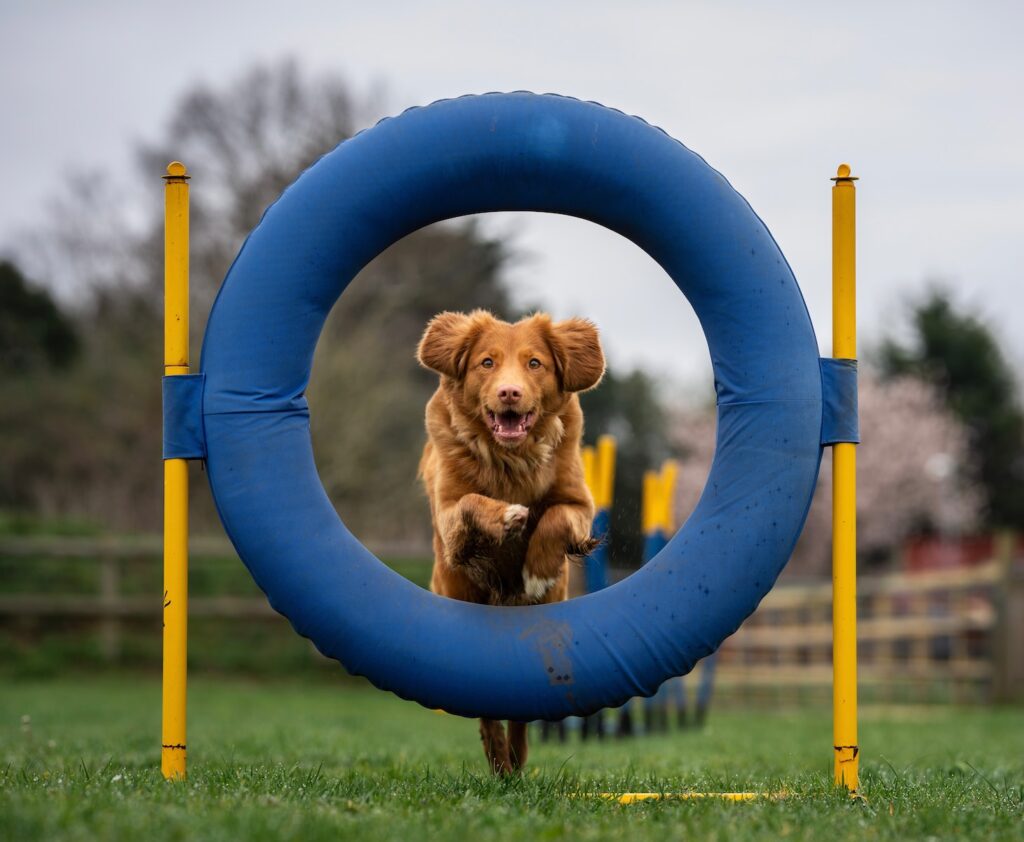
Step 1: Food lure over the jump at its lowest possible point.
Regardless of the equipment you’re using, lay the jump down on the floor. You want your dog to get used to moving over something foreign to them without the fear of heights yet.
- Position your dog so that he is facing the jump.
- Grab the treats and lure him to walk over the jump by placing the food a couple inches in front of him and moving him over the jump.
- Once he walks over it, mark and reward.
- Keep practicing until he starts to get it. Then move the food farther away from him and keep practicing.
When he’s showing confidence in walking over the jump with quicker food luring movements, you are ready to make it a little harder.
Step 2: Add a couple inches to the jump’s height.
This should be fairly easy to execute and practice. All you have to do is raise the jump by 1-2 inches. At this point, he should still be walking over the jump, but has to raise his legs a little higher to do it. To teach this milestone, follow the above steps to food lure over the jump.
It may seem a little scarier for your dog and that’s OK. A couple things to keep in mind are:
- Your dog may show some hesitancy. That’s OK, stay patient and wait a few minutes for your dog to think about his actions.
- You may need to motivate him a little more. You can do this by slowing down your movements in food luring. For example, put the food directly in front of his nose instead of a few feet in front of him if he seems scared to move.
Step 3: Keep adding more inches & the cue word.
At this phase, you should really be adding a couple inches and repeating step two over and over until he actually needs to jump in order to cross the obstacle. At this point, you’re dog will probably need to be walking briskly or jogging in order to jump over the obstacle. When he starts to do that with confidence, I begin to add the cue word. I use the cue word “jump,” but you can use whatever you want.
Remember, when you are training with a cue word, first start by:
- Saying the cue right before you food lure him over the jump.
- Begin to lengthen the time between saying the cue and food luring. Start with a couple seconds. Keep practicing.
- When he seems to have the hang of it, say the cue word and wait. Be patient and wait ten seconds or so. If he doesn’t seem to get it, go back to saying the cue word and immediately food luring. Then keep practicing, and build up to it.
Teaching a dog a low jump is a fairly straight forward trick that should only take 3 days to about a week to learn. All it takes is some patience, the right treat, and boosting your dog’s confidence.
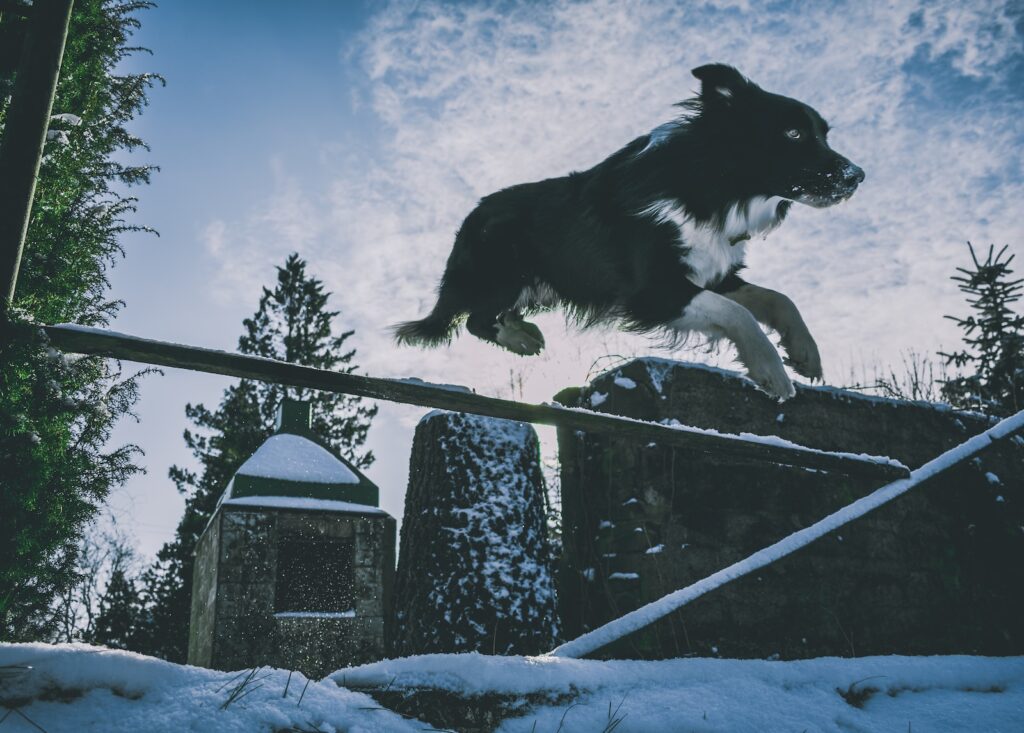
Conclusion
Training a low jump is very simple. All you need is the right equipment – an obstacle to jump over and a treat. Then all you need to do is train your dog to be comfortable walking over the obstacle on the ground, and then slowly raising the height of the obstacle until it’s high enough to require a jump. Then add the cue word and keep practicing.
That’s it! It only took Ezra about three days to learn to do the low jump. How long did it take you and your dog?
Save for later:
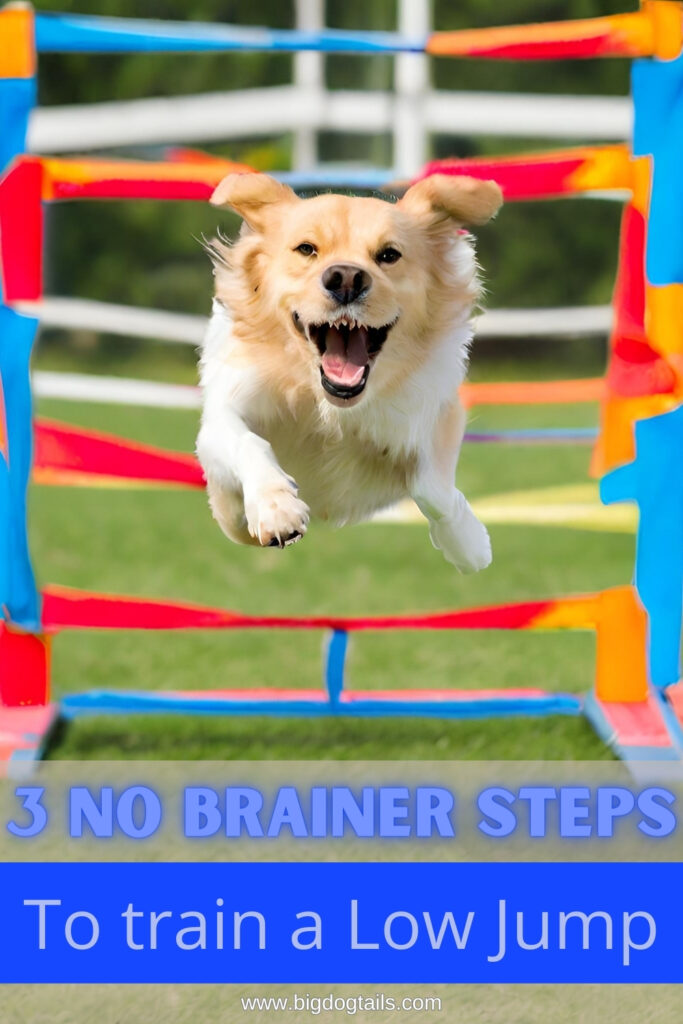
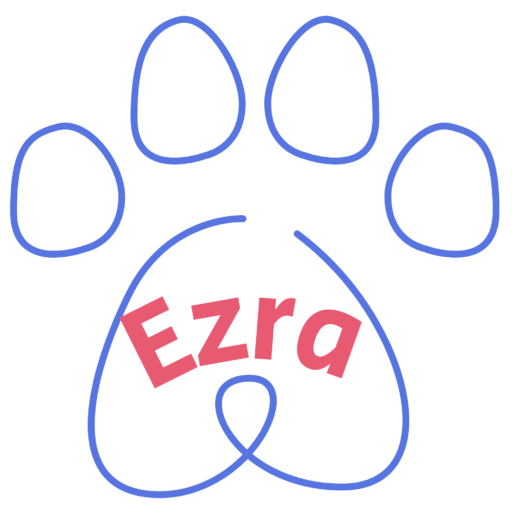
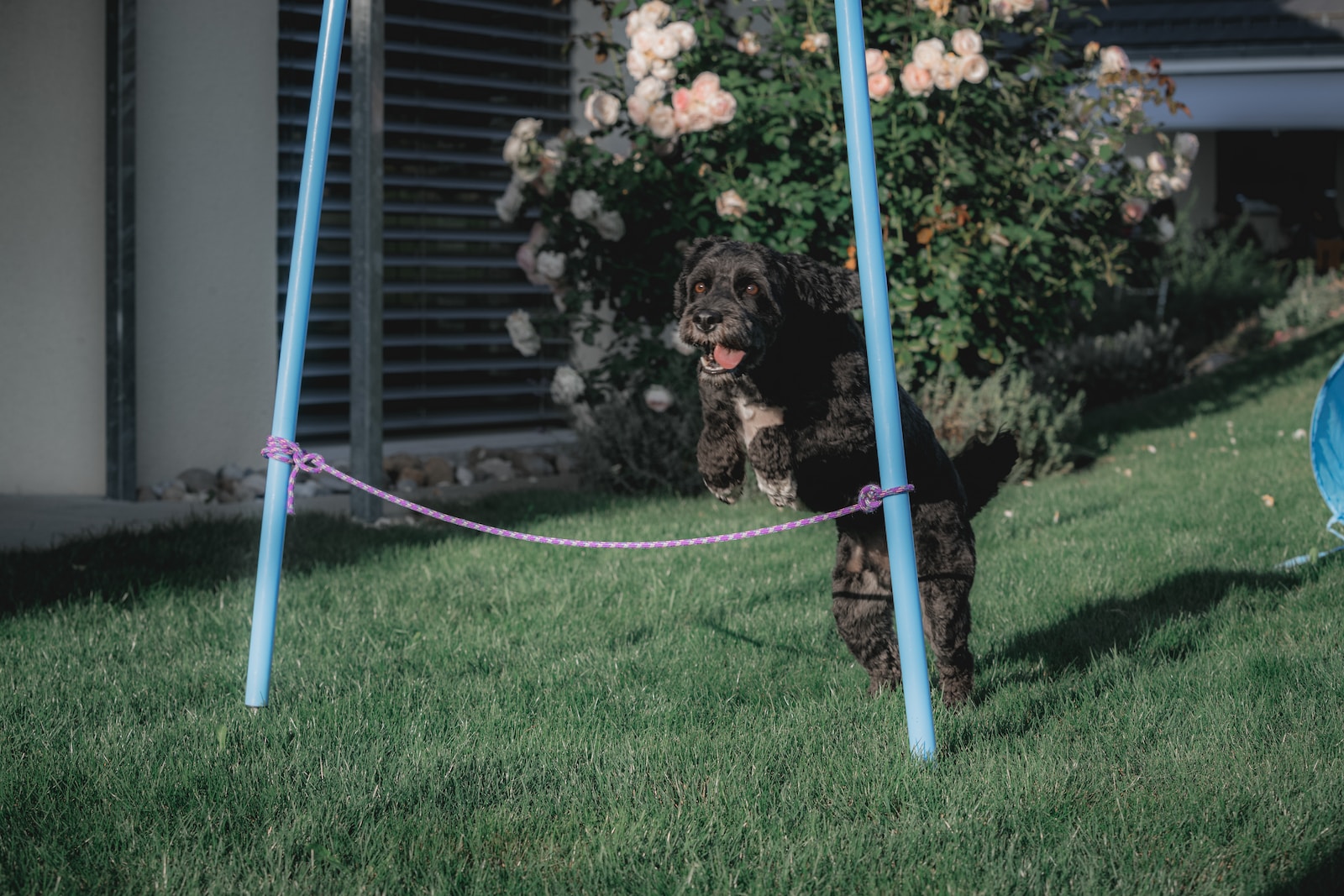
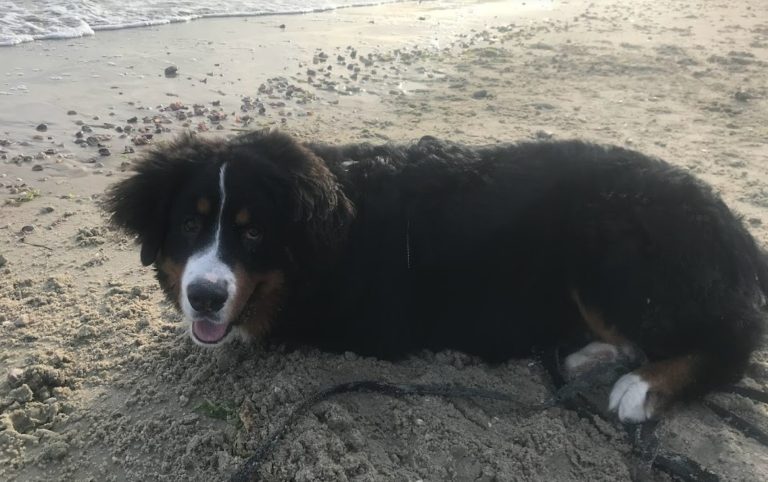
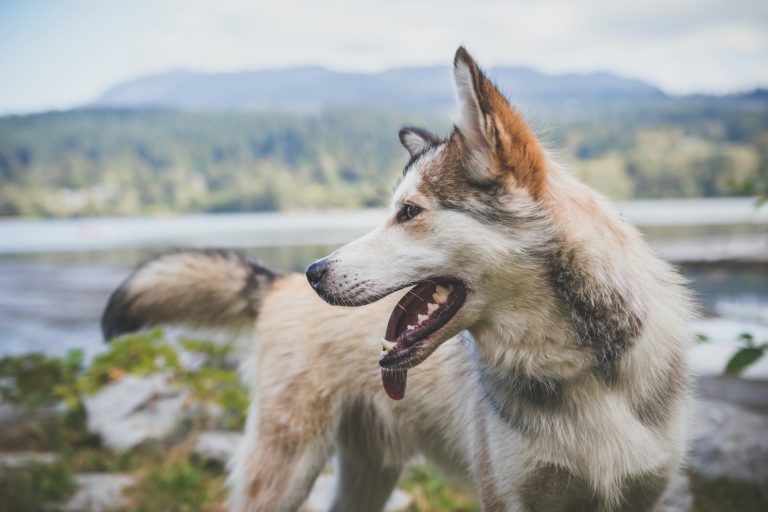
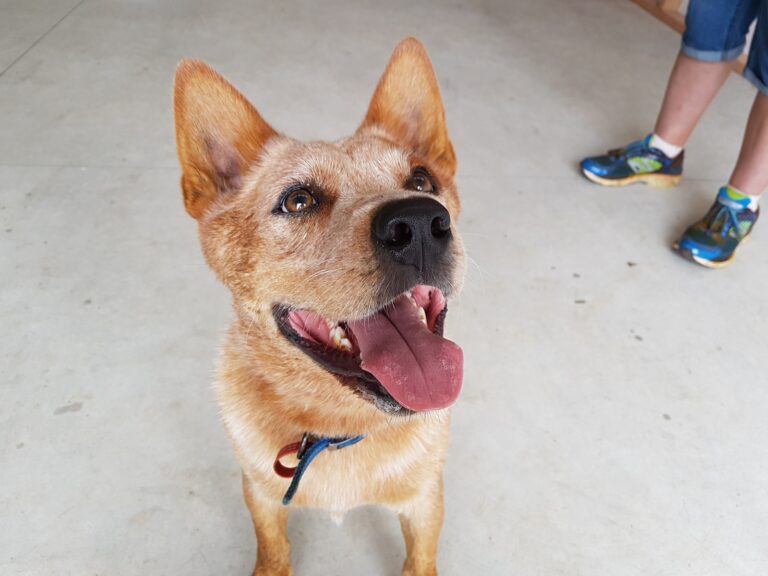
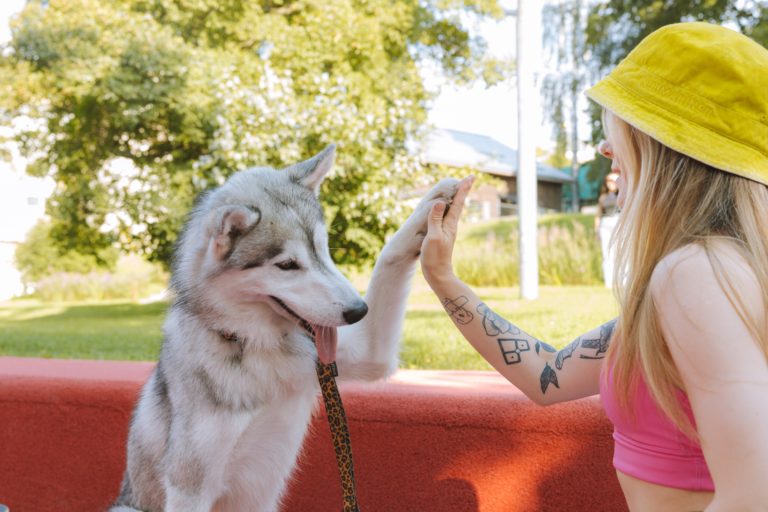
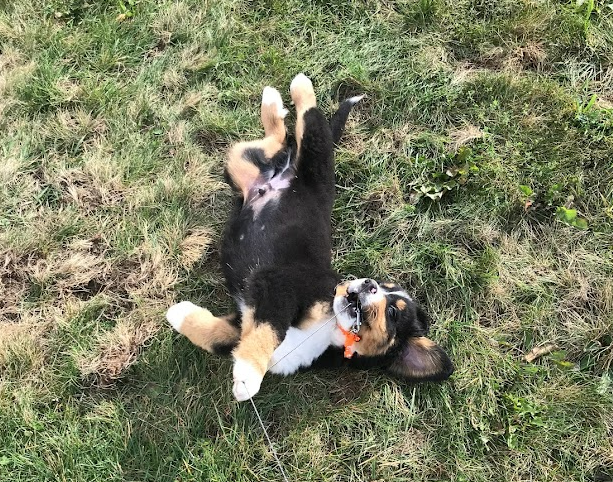
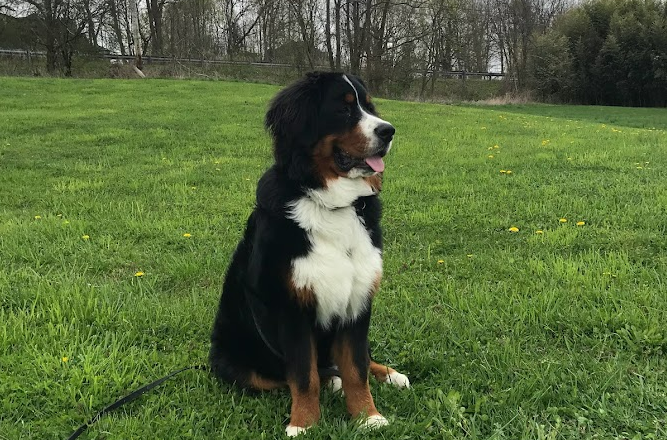
One Comment
Comments are closed.